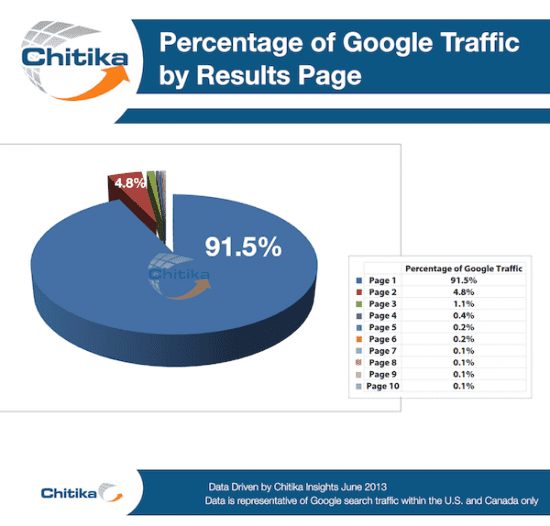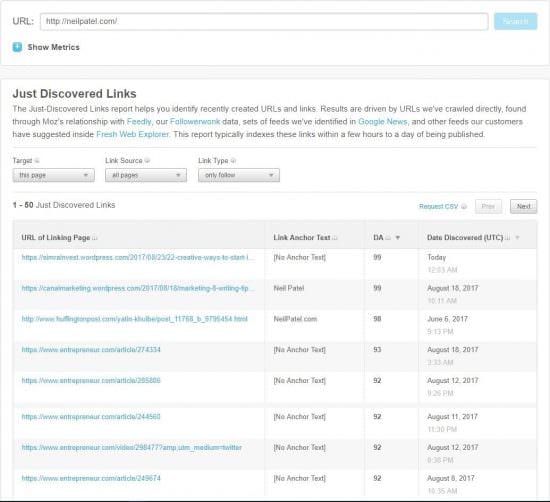Don't fall short of these common search marketing mistakes
It seems almost too easy at first. It really does. You find a keyword tool and you type in whatever search term that comes to mind. Voilà! Like magic, you find out how many people are searching for your keyword, as well as a whole slew of other useful statistics like the keyword’s average cost per click, competition, suggested bid, and other data – depending on which keyword tool you’re using.
However, before you get too ahead of yourself and pick a keyword to target, know that there is more to keyword planning than meets the eye. There are a lot of nuanced factors you might not have accounted for that can entirely change your keyword strategy. To make sure you get it right from the get-go, here are ten common mistakes that you’ll want to steer clear of.
1. Not realizing that Google Keywords Planner can give more accurate results
Let’s kick things off with one of the most basic mistakes you can make. The first keyword planning tool you’ll probably start using is Google Keyword Planner. This is Google’s own planner after all, so you’d be right to think that it’s one of the most popular and reliable options available.
If you quickly sign up for a Google AdWords account (in order to access the keyword planner) and type in “content marketing,” this is what you’ll see:

The “Avg. monthly searches” column shows a range of 10K – 100K. That’s a pretty wide range, isn’t it? Fortunately, you can get a more specific estimate if you have an AdWords campaign running. Once you have it set, wait a day or two and you’ll begin getting more accurate numbers like this:

Much better! However, there’s a good chance you don’t want to be spending a ton of money on an AdWords campaign just yet – after all, you don’t even know what keywords you’re targeting! To save yourself money, set a very low daily budget and put filters so that your ad is only displayed a few times a day. You do need ad impressions though, or else you won’t be able to access the more accurate keyword statistics.
2. Not distinguishing singular from plural
Google Keyword Planner lumps plural and singular keywords together. If you put in “whiteboard animation” or “whiteboard animations” in the planner, both will yield results for what appears to be the keyword’s singular form, as shown here:

While you might think Google results are exactly the same for both the singular and plural form of a keyword, they’re surprisingly not. Try testing this out yourself. You will most likely see similar, but slightly different results for whatever keyword you’re searching for.
Unfortunately, Google no longer gives you the ability to tell whether the singular or plural form of a keyword is more popular. The good news is, both SEMrush’s and Moz’s keyword planners are worthy alternatives that give you this data. Here are the keyword results for “whiteboard animation” when using SEMrush’s keyword tool:

Amazingly, “whiteboard animation” is searched for 2,400 times per month while “whiteboard animations” is searched for only 110 times per month. Good thing we made this distinction before we ranked for the plural version of this keyword!
3. Ignoring search trends
It’s easy to fixate on the total average monthly search volume and ignore any potential variation in monthly volume over the past year.
To be fair, most of the time the volume numbers are pretty consistent from month to month, but it’s always better to play it safe and take a quick look. Many keyword tools already have this information neatly shown on a graph right there for you so it’s not too much extra work.
Some keywords may have gradually increasing search volume while others may have gradually decreasing search volume, and you may be able to extrapolate those trends to make decisions about which ones to target. The volume of certain keywords may also exhibit seasonality, perhaps being more popular during one season than another.
4. Not accounting for keyword match types and location
If you have a knack for paying attention to detail, you might have noticed the huge discrepancy in volume for the keyword “whiteboard animation” across different keyword tools in the examples earlier.
Google shows 12,000 searches per month while SEMrush shows 2,550 searches per month if we include both singular and plural versions of the keyword. So what’s going on here?
Really, there are two major factors creating this discrepancy. The first is match type. I suggest learning about each match type by reading none other than Google’s own support page. Google Keyword Planner defaults to a broad match type while SEMrush defaults to a phrase match type.
The other factor is location. Google defaults to including searches from the entire globe while SEMrush defaults to only including those from within the United States. Once you account for both of these differences, you’ll get volume numbers that are far more in alignment with each another. The key is to contextualize your results and be careful when making assumptions about your keywords data.
5. Underestimating long-tail keywords
Long-tail keywords are more specific search phrases that usually get less traffic, but will have a higher conversion rate. For instance, ResumeGo doesn't target generic keywords like “resumes” or “CVs”. Instead, they shoot for long-tail keywords like “professional resume writing services.”
While we would easily get more traffic if we were ranked for the keyword “resume,” most people who enter that into the search bar aren’t really looking to buy a resume. They might be more interested in, say, learning about resume tips or finding resume templates. On the other hand, people who search for the long-tail keywords that we target would almost certainly be interested in our resume writing services, or else they wouldn’t have searched for those specific keywords to begin with.
It’s easy to underestimate long-tail keywords due to their lower search volumes. However, contrary to what many might think, long-tail keywords actually make up about 70% of total searches so be sure to have your eye out for them!
6. Failing to realize that being on page two means nothing
Think about how frequently you visit the second page of Google’s search results. Not too often right? You might even have a hard time remembering the last time you did it.
If you’re going to target a keyword, be sure to aim for the first page, because according to studies like Chitika's, the front page collectively gets 91.5% of a keyword’s traffic. Page two only get 4.8%.

7. Not doing enough research
Some keyword tools give you data that miraculously shows how difficult a keyword is to rank for. For instance, Moz’s Keyword Explorer has a difficulty and opportunity statistic as shown below:

While this might seem super useful, and maybe it is to some degree, it’s important to take this number with a grain of salt. A more thorough way of studying your competition would be through MozBar. This tool allows you to research your potential competitors’ backlinks and examine other metrics. From there, you can decide whether or not you can compete with them in the SEO game.
8. Judging difficulty solely based on page authority and links
Many people use MozBar or a similar tool to assess keyword difficulty by looking at the page authorities (PA) of the competition. It’s tempting to conclude that if the first page of the keyword “infographics” is littered with 70-80 PA results, then it’d be far harder to rank for that keyword than “essay writing,” for which the first page might have results with only 50-60 PA.
Making that assumption can be quite misleading. This is because some keywords are harder to build links for than others. For instance, someone could devise a strategy where they create free infographics for high authority blogging sites and, in return, they’re rewarded with a lot of links back to their own site with the anchor text “infographics.” This could be a neat strategy, and one that can get you a lot of links fast. However, this same strategy can’t be applied to rank for a keyword like “essay writing.”
Despite a keyword having competitors with high PAs, sometimes it might still be easy to rank for depending on what SEO strategies you have in mind for that particular keyword.
9. Not identifying your goal
When we talk about keyword difficulty, what exactly are we referring to? Are we referring to how difficult it is to get onto the first page? How difficult it is to be among the top three results? Or how difficult it is to seize that very first spot?
For some keywords, it might be fairly reasonable to get onto the first page, but nearly impossible to beat the top three results. This is why it’s so important to clearly lay out what your SEO goals are for each keyword, and then assess the difficulty of achieving those specific goals. For some tougher keywords, you might be able to generate a nice revenue stream simply by being in fourth or fifth place in the search results.
On the other hand, for other keywords – maybe long-tailed ones that have less volume – only by being the top result would you get enough visitors for the SEO effort to be worth your while.
10. Not realizing that your competitors are getting new links too
It’s really natural to look at a competitor’s PA and links, and say to yourself, “I can beat that, just give me four months!” It’s awesome to have that kind of confidence, but don’t forget that your competitors are constantly building links too. By the end of four months, you might have the same quality links as your competitors had back then, but maybe your competitors have been gaining links even more quickly than you, and now you’re even further behind.
Assessing difficulty is more than just thinking about the PA and links of your competitors now. It’s about gauging where they’ll be in the future, and whether you can accumulate links faster than they can.
A great way of seeing how active a site is with its SEO efforts is to use Moz’s “Just Discovered” feature, as shown below:

As you can see, Neil Patel’s site has been getting a ton of recent links. You definitely wouldn’t want to compete with this guy! If you did, you would want to learn the techniques he is using.
Conclusion
Keyword planning is a lot like playing chess. There are so many different options available, it’s impossible to know for certain whether you’ve made the right move. All you can do is think critically, research your opponent, understand yourself, and then make whatever move you think is best.
Thanks to Peter Yang for sharing their advice and opinion in this post. Peter is an entrepreneur and marketing guru who co-founded
ResumeGo. His business offers cv and resume writing services by matching job seekers with professional resume writers who assist them in their job search. His latest venture is Mock Interview, an interview training and coaching service.











